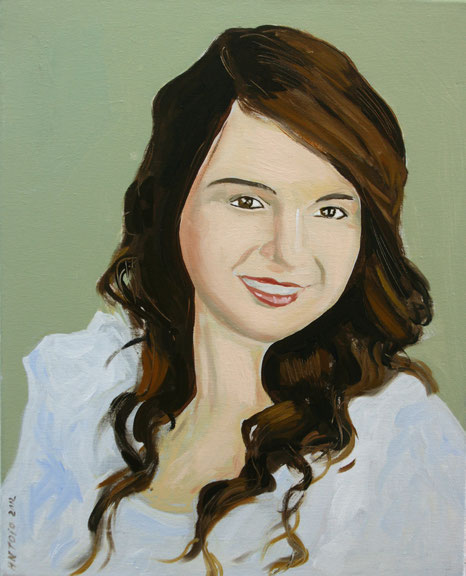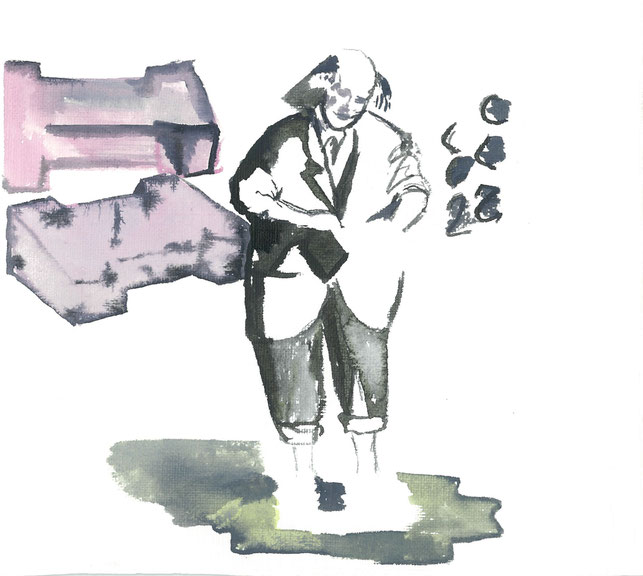In the past, as a classical orthodox leftist stance, we used to have hardcore socialists who believed that political art is best realised when orthodox forms of making politics are directly applied to art. Art, in this sense, was seen best serving as a shadow of the real thing (‚real politics’). This time, we are confronted with heterodox leftists, who believe that political art is best realised when heterodox forms of making politics are directly applied to art. Same strategy, different blueprint. The 7th Berlin Bienniale ( 27 April – 1 July 2012), curated by Artur Żmijewski together with Joanna Warsza and Voina art collective, was a good opportunity for thinking on the forms of radically political art events and art works. Berlin was like an exaggeration of an idea. But what's wrong with experiments like this Berlin Biennale? The non-existence of art in it? Or the non-existence of a need for art at all? And where do we find ‚the’ political today? Is there an aesthetical place of the political today for a radical to find? Taking today's political forms of action as representatives of ‚what is political today’ is seen as a functional option in such cases. Horizontal, grassroots, non-hierarchical, non-pyramidal forms of action are taken on the streets. So lets observe how they do it and duplicate it. It is true that today's radical political actions, protests, events, movements are all about new forms of organising and acting? The ideology lies in the forms. So when you apply the way they organise protests to art, you may feel like you are applying ‚the ideology’ of our times, the most radical ideology for transforming societies today. Yet, there is one crucial detail we are missing here. The ideology of today's politics do not lie in the forms they have found, it lies in the search. The forms that are being used do not represent the movement or their politics. But their ‚understanding of form’ does represent the movement (no need to say, the characteristics of the movement is based on the idea that no representation substitutes the represented, all representations are temporary).
Today's heterodox, horizontal, anti-authoritarian movements have a special understanding of form. How to organise is the main difference not the reason for organising. This understanding, in practice, means constant experiments with form, with an ethical compass. We are not against forms per se, we do not want formlessness, but we wouldn't comprise and accept any form of action, protest, art, art organising, etc. as ,the ideal form according to our politics’. This is where the unrest bites, this is the mouth of the tiger: no form can be reproduced with confidence. It is always an experiment and nobody knows the outcome. We just know we have to be prefigurative. And we need to keep an open eye for experiments. New forms do not always mean something ,created’. New experiments do not really require creativity or imaginative power. Sometimes you just find a new star, which was of course already there for millions of years.
When you directly apply the best political forms of your times to art you cancel art's own appetite for new forms. Just ask this: How do we engage with an occupy-style exhibition? You are satisfied when you understand the form of it. And that's it. It is like a gesture. A polite suicide of art. You like the gesture or you do not like the gesture, in a facebooklike fashion. But the ,real thing’, I mean the Occupy aiming to be Occupy not an exhibition or a biennial, doesn't rest when it finds a form. And it may change that form anytime too.
How do we engage with the horizontality of the new protest movements? How do we consume them? And how do we consume such grassroots qualities in art? In politics, all you have to do is support and be a part of it if you can. In arts, you cannot really be a part of it even if it is a ‚participatory art’. You cannot be the one who is really doing it – while it is all based on the idea that there are no ‚doers’. And it doesn't mean much to support such efforts. Supporting the Arab revolution, activists fighting on the Tahrir Square and worldwide Occupy movements is one meaningful thing. But what could it mean to support the Berlin Biennale?!? You could have sent a pizza to Zucotti Park to support the activists. Would it mean anything to send pizza to a gathering during the Berlin Biennale?
I believe the problem or rather the solution lies in discussing how we consume horizontal, grassroots, occupy-like, from-below, art events and art works? Rather than focusing on how we create them and discussing what we do when we create them, or how best we should create them, I feel the need to discuss how we engage with them, how we consume them... Other than ‚supporting’ them. What do we do with them?
Why do we feel more relaxed and in control when we face traditional forms? In many cases, if you want to learn something from a text – ie you want to control its meaning – you do not want it to be experimental. Which equates to a politics as such: if you want to discuss something crucial you do not want experimental forms. You want the meaning trasnmitted with minimum loss. You feel like the function will be lost on the way.
Nevertheless, that was not the case with the antiglobalization movements. They proved effective as well. Tahrir too was functional not only ‚beautiful’. Tahrir was not organised through political parties, coalitions, direct orders, hierarchies, plans, master plans etc, as we all know. And it did succeed. Not only marked the end of Mubarek regime but it also empowered the Egyptians1. It is also successful in continuing the revolution. The spirit of the approach is captured in a quote from an interview with Swiss–French avant-garde filmmaker Jean–Luc Godard:
REPORTER: Mr Godard, surely you agree that a story must have a beginning, a middle and an end.
JEAN-LUC GODARD: Yes, of course. But not necessarily in that order.
So, do we want a political movement ‚necessarily in that order’? Seems like we don't. Do we want art ‚necessarily in that order’? We enjoin we don't but I find this questionable. When I ask how do we read a hypertextual text, or consume a network-like art I have certain books in mind. For example B. S. Johnson's novel The Unfortunates, or Julio Cortazar's novel Hopscotch. Both reflect the 60's: Hopscotch was first published in 1963, and The Unfortunates in 1868. Both books reflect the same principle: ‚choose your own order’. The Unfortunates comes as a book in a box. It includes 27 unbound chapters. The „First“ and „Last“ chapters are designated as such. The intervening 25, ranging from 12 pages to a single paragraph, are to be read in any order we choose. Book, as an object, stands like an artwork. But when you actually read it it is pretty easy to lose the unbound chapters, forget them in different places, or to forget the order you have chosen. If you do not first learn that this is an important experimental book you should read, if you accidentally come across the box of The Unfortunates, it is very likely that you wouldn’t really continue reading it all. Also the narrative turn in historiography, which began with Hayden White, again in the 60's, gave life to interesting experimental history books where we choose our own order of reading. Hans Ulrich Gumbrecht's In 1926: Living on the Edge of Time and Sven Lindqvist's A History of Bombing are two such examples. Both are great works. Gumbrecht's book consists of ‚text chunks’ that aim to make you ‚feel in 1926’, while Lindqvist's book has 22 alternative beginnings and no end. The problem with Lindqvist's A History of Bombing is that as you enjoy his approach to the history of bombing you want to learn more. In short, you want to ‚consume’ more of his ‚stories’. Yet the network-like reading scheme he offers is tiring. You get exhausted. It is pretty easy to lose where you were. The structure of the book is so nice, so hypertextual, so non-hierarchical; but the experience of reading is not that nice, and it is a bit hierarchical as you are not allowed to read the history of a bombing from a ‚proper book’. It reminds me a joke:
– Why do anarchists only drink herbal tea?
– Because proper tea is theft!!!
I still like the idea of Gumbrecht's book, In 1926: writing a book not to comprehend a certain period but writing a book to make you feel in a certain period. Hands touching the walls of the times. On the other hand, the experience of reading such books, may give a clue about the ways we experience horizontal politics in contemporary art. Is proper tea a theft today?
There is always a void between the killer (book) and the victim (reader), or the victim (book) and the perpetrator (reader not reading). They are never alone.
1 See especially Mohammed Bamyeh's ‚impressions’ from the revolution, The Egyptian Revolution: First Impressions From the Field: http://www.jadaliyya.com/pages/index/561/the-egyptian-revolution_first-impressions-from-the. And also Mark LeVine's remarks on the ‚Egyptian black bloc’, in: Revolution Back In Black: http://www.aljazeera.com/indepth/opinion/2013/02/201322103219816676.html.



